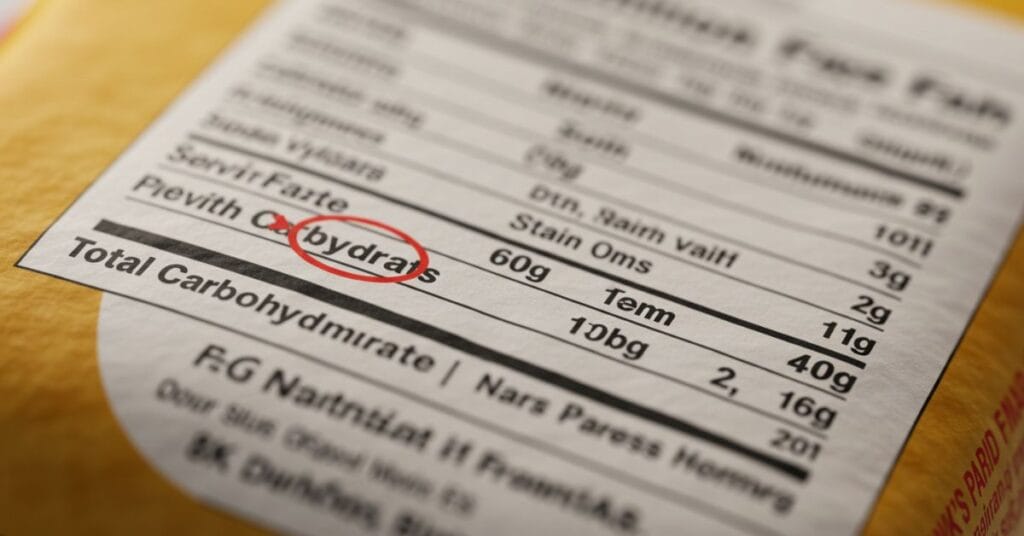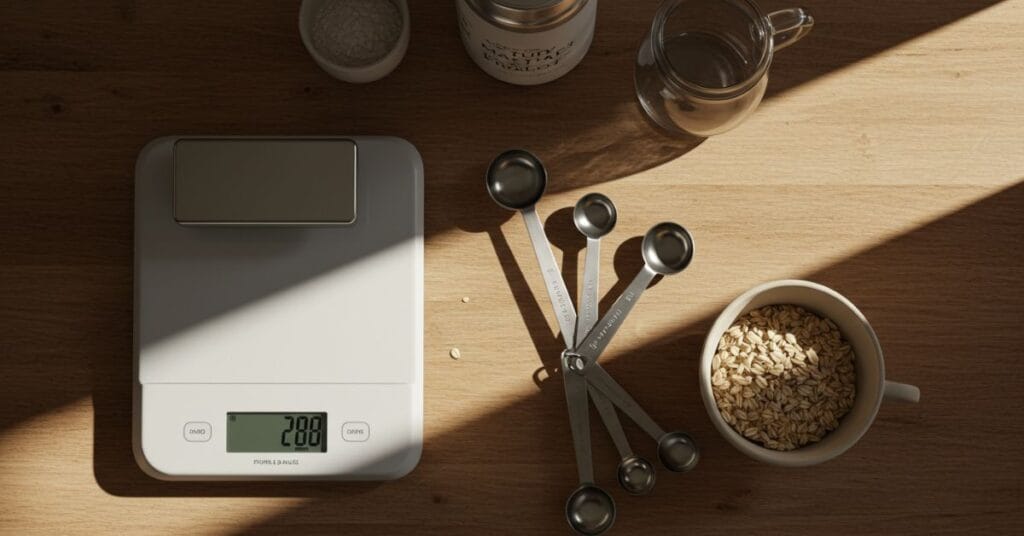Affiliate Disclosure: This page may contain affiliate links. If you purchase through these links, we may earn a small commission at no extra cost to you. This helps us to create helpful content like this.
Introduction: Take the Guesswork Out of Your Meals
Managing diabetes can often feel like a full-time job, especially when it comes to your diet. If you’re tired of the uncertainty and want more control over your blood sugar, you’re in the right place.
But what if I told you there’s a skill you can learn that transforms guesswork into confidence? It’s called carb counting, and it’s one of the most powerful tools for managing diabetes. This guide will walk you through everything you need to know, step-by-step, to master this essential skill and gain more freedom in your food choices.
For an overview of how this fits into a larger eating strategy, don’t forget to check out our cornerstone article, Top Diet Tips for Diabetes: A Complete Guide.
What Exactly Are Carbohydrates (And Why Do They Matter)?
Before we count them, let’s understand what they are. Carbohydrates, or “carbs,” are a type of macronutrient found in many foods and drinks. Your body breaks down most carbs into glucose (sugar), which is its primary source of energy.
For people with diabetes, the amount and type of carbs you eat directly affect your blood sugar levels. There are three main types of carbohydrates:
- Starches: Complex carbs like bread, rice, pasta, and starchy vegetables (potatoes, corn).
- Sugars: Simple carbs found naturally in fruits and milk, or added to foods like soda, candy, and desserts.
- Fiber: A unique carb that your body can’t digest. It’s crucial because it helps slow down sugar absorption and improves blood sugar control.
While all are important, starches and sugars have the most significant impact on raising your blood sugar.
The “Why”: Key Benefits of Counting Carbs
Why go through the effort of counting? The benefits are game-changing:
- Better Blood Sugar Control: It’s the most precise way to match your insulin dose to your food intake (if you use insulin) or to predict how a meal will affect your glucose levels.
- Increased Food Flexibility: Once you master counting, you can more easily incorporate a variety of foods into your diet without a major blood sugar spike.
- Empowerment and Confidence: It removes the fear of eating and gives you the data you need to make informed decisions.
How to Count Carbs: Your 4-Step Guide
Ready to start? Let’s break it down into simple, manageable steps.
Step 1: Become a Nutrition Label Detective
The nutrition facts label is your best friend. Here’s what to look for:
- Serving Size: This is the most critical piece of information! All the numbers on the label apply to this specific amount. If you eat double the serving size, you must double the carb count.
- Total Carbohydrate: This number (in grams) is what you’ll count. It already includes starch, sugar, and fiber.

Step 2: Use Tools for Foods Without Labels
What about fresh fruits, vegetables, or restaurant meals? You’ll need some tools:
- Carb Counting Apps: Apps like MyFitnessPal, CalorieKing, or Figwee make it easy to look up the carb content of thousands of foods.
- Online Databases: Reputable websites like the USDA FoodData Central provide accurate nutritional information.
- Carb Counting Books: A good, old-fashioned reference book can be a great resource to keep in your kitchen.
Step 3: Master Your Portions (No More Guessing!)
Since carb counts are based on serving sizes, measuring your food is essential, especially when you’re starting.
- Measuring Cups and Spoons: Essential for liquids and dry goods like rice, oatmeal, and flour.
- Digital Food Scale: This is the most accurate way to measure food, especially for items like bread, fruit, and meat. It takes the guesswork completely out of the equation.

Step 4: Do the Math and Keep a Log
Add up the grams of “Total Carbohydrate” for everything in your meal.
- Example: A sandwich with 2 slices of bread (30g carbs) + a small apple (15g carbs) = 45g of total carbs for that meal.
Keep a food diary or use an app to track your meals, carb counts, and blood sugar readings. This log will help you and your doctor see patterns and make adjustments.
Practical Examples: What Carb Counting Looks Like
Let’s put it into practice:
- Breakfast: 1/2 cup of cooked oatmeal (15g carbs) + 1/2 cup of blueberries (10g carbs) = 25g Total Carbs.
- Lunch: A large salad with grilled chicken, non-starchy veggies (negligible carbs), and 2 tablespoons of vinaigrette (5g carbs) + 1 small whole-wheat roll (15g carbs) = 20g Total Carbs.
- Snack: 1 small container (6 oz) of plain Greek yogurt (8g carbs) + 1/4 cup of almonds (protein/fat focus) = 8g Total Carbs.
Beyond the Basics: What About Fiber and Sugar Alcohols?
- Fiber: Since fiber isn’t digested, some people subtract it from the total carb count. If a food has more than 5 grams of fiber, you can subtract half the grams of fiber from the total carbs. Example: A bar with 20g Total Carbs and 8g Fiber. (20 – 4 = 16g net carbs).
- Sugar Alcohols: Often found in “sugar-free” products, these can still affect blood sugar. A general rule is to subtract half the grams of sugar alcohol from the total carbs.
Always discuss these advanced methods with your dietitian first.
Conclusion: From Counting to Confidence
Carb counting is not about restriction; it’s about knowledge. It’s a skill that empowers you to understand your body better, make confident food choices, and live a more flexible, healthier life with diabetes. Start slow, be patient with yourself, and remember that every small step is progress.
Ready to Make Carb Counting Easier?
To be truly successful with carb counting, accuracy is key. A reliable digital food scale can be your most valuable tool, taking the guesswork out of portion sizes and ensuring your counts are precise.
Check out our top-rated digital food scale on Amazon. It’s easy to use, accurate, and a favorite in our community!
Further Reading & Resources
- Top Diet Tips for Diabetes: A Complete Guide
- Smart Food Choices for Diabetics
- American Diabetes Association (ADA) – All About Carbohydrates
